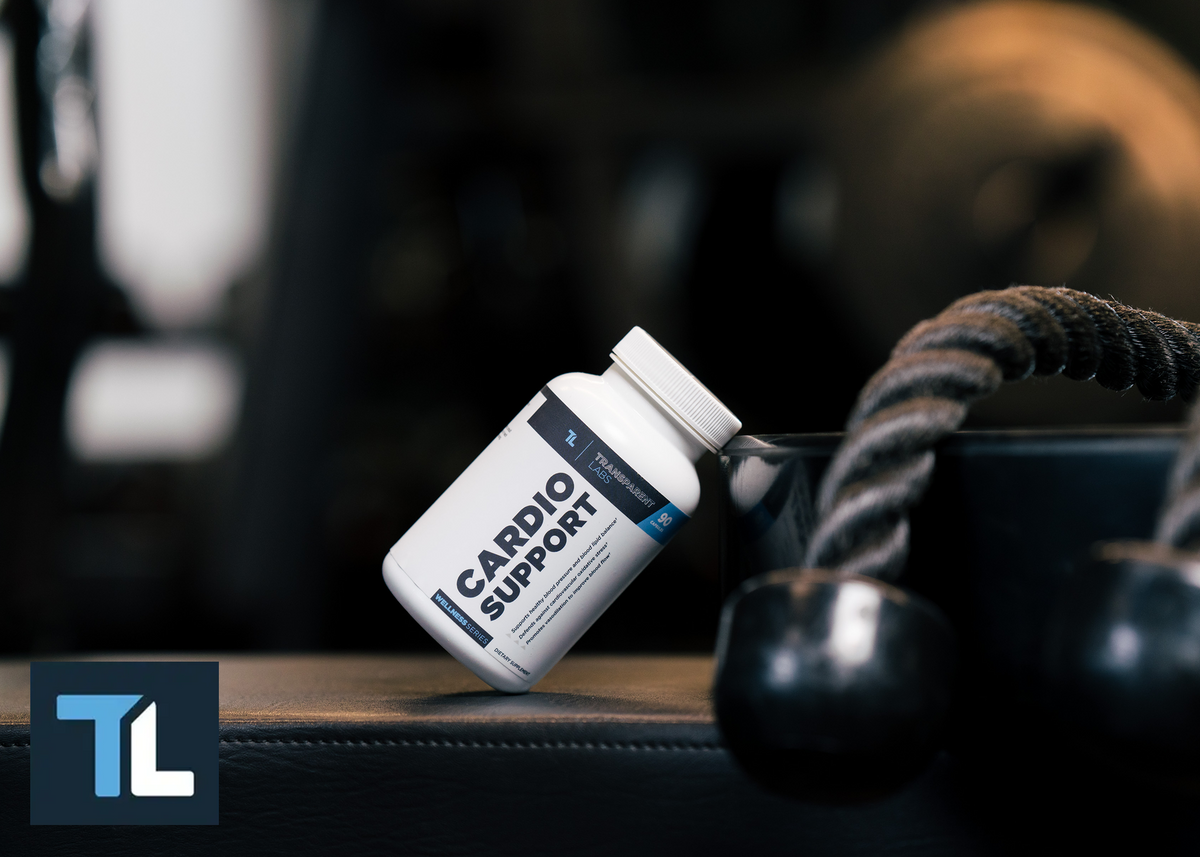Cardio After Leg Day | What You Should Know (Good and Bad)

The short answer is yes, aerobic activity after training the leg muscles is suitable...as long as you perform cardio the right way. As with everything else related to training and overall fitness, a proper game plan can go a long way in helping you see the results you are looking for. Even if you have a very intense leg day, focusing on the cardiovascular system and burning calories afterwards can actually be a smart move.
The Benefits of Cardio After Leg Day
Enhanced Recovery
Going with a High Intensity Interval Training (HIIT) approach to cardio may not be the wisest move, but steady state or light cardio can actually help promote blood flow and nutrient delivery to the muscles in the lower body, which can help improve and speed up the recovery process. Moving the lower limbs after a hard workout can also counter muscle soreness and stiffness after the workout is over. One study verified that active recovery can actually help athletes decrease the effects of Delayed Onset Muscle Soreness (DOMS).(1) This alone should show that cardio immediately after leg workouts is a good idea.
Improved Cardiovascular Health
It may be considered stating the obvious, but it is worth noting that cardio can play a positive role inA heart efficiency as well as endurance and overall stamina. (2) This does not only mean for the short term. Performing cardio regularly can help provide cardiovascular benefits well into the future as well. (3)
Increased Caloric Burn
The body prefers to use glycogen for energy when you are performing intense activity. A cardio session can help burn calories, which is a valuable component to fat loss. Engaging in leg training before a cardio workout can help you use up those glycogen storages, which would then force the body to rely on calories for energy during cardio exercise.
Conversely, if you were to perform your cardio first, followed by the leg training, your body would tap into the glycogen storages first for the cardio, which would diminish your performance in the weight room. Research in 2014 concluded that if lower body cardio and resistance training were to be performed in the same session, "the (resistance) workout should not be preceded by lower-body aerobic exercise."(4)
Doing cardio or a low impact endurance exercise after a leg day workout can also help continue boosting the metabolic rate and promote what is known as Excess Post-exercise Oxygen Consumption, or EPOC. This is more commonly known as the "afterburn effect." This effect can last for several hours after resistance training.(5) In other words, even after the workout is over and you have had your post-workout protein shake, your body will continue burning calories without causing more damage to the muscle tissue.

The Potential Drawbacks of Cardio After Leg Day
Risk of Overtraining
As with any other component of exercise, too much of a good thing can actually be a bad thing. Yes, tearing down muscle fibers and burning calories can be done in the same workout, but the more you do, the more susceptible you can be to overtraining. A balanced training routine can include both weight training and cardio, but too much cardio can keep you from making progress just like too much weight training can lead to possible injuries and loss of strength.
Common signs of overtraining can include staying tired, irritable moods, loss of motivation, decreased performance in future workouts, and loss of muscle mass if it goes on too long. If you are noticing any of these symptoms or others that make you reluctant to continue your workout routine, then it is time to reevaluate what you are doing.
Delayed Muscle Recovery
The muscle recovery process is just as important, if not more so, than the training itself. Research has shown there are three phases of muscle regeneration - destruction, regeneration, and remodeling. Destruction occurs during training, regeneration refers to the proliferation of cells, and remodeling is what you ultimately want from the training, maturation and growth. (6)
If you decide to do challenging cardio circuits to tax the major muscle groups in the lower body even more after the work they had already done in the weight room, then they won't be able to complete all three phases properly. If you have to interrupt your workout schedule because of extended pain (not soreness), then you won't make the progress you are seeking on either the muscle growth or cardiovascular fitness side.
Optimal Types of Cardio Post-Leg Day
Low-Impact Cardio Options
Now that we have established cardio after leg day is suitable, what kind should you do? As crazy as this may appear, a stationary bike or cycling would be great choices. Lighter cycling specifically targets the muscles in the lower body. After all the intense resistance work you've performed, that light and consistent motion can help improve blood flow and tack on extra calories burned. It is also low impact compared to an activity like running, which would place more load on the joints.
Other low impact forms of cardio that you could perform are on an elliptical machine or even swimming. The elliptical allows you to move consistently without taking as much of a toll on the joints. Performing laps in a pool or doing water exercises can allow you to keep moving while the water provides support around you.
Moderate Intensity Cardio
Even though light cardio is great for post leg day workouts, some people are competitive with themselves and want to make sure they leave it all in the gym. High intensity cardio is certainly not recommended, but you could bump up the effort to a moderate level and still see benefits if that statement applies to you.
Brisk walks or even light jogging can count as moderate cardiovascular exercise as long as you are healthy overall and can do so without limping or altering your stride because of the training. As tough as it may be, you must not exceed moderate effort if you choose to do moderate intensity. If you can't carry on a conversation or find you are breathing harder than usual, that is too intense. 20-30 minutes of moderate cardio after leg day should be all you need. Going beyond that will start to negatively impact your recovery. Taking an essential amino acids supplement while you do this cardio would be a smart choice as well.

Tips for Integrating Cardio into Your Leg Day Routine
Timing Your Cardio Sessions
Now you know that cardio after leg day is acceptable and what kind of intensity to use. Let's cover when to do it. If your schedule won't allow you to perform cardio later in the day, then taking around 15 minutes to stretch and focus on flexibility before moving on to cardio would help you minimize risk of injury and prepare you for the aerobic exercise to come.
If you are able to do cardio later in the day, then scheduling a 20-minute workout in the evening would be a smart strategy. This can be any of the previously mentioned routines as long as you don't put in high or maximum effort. Low or moderate effort at best should be used.
Another option that some fitness-minded people consider is cardio before leg day. It can be, but you should think about your priorities and goals when making that decision. Research has concluded that if you do weights first before cardio, then your aerobic performance may be impacted. (7) Flipping the methods also flips the impact. Cardio first could alter your effort in the weight room.
In the long run, common practice among athletes is weight training before cardio so they can get both the high performance in training and the calorie burning afterwards. Additional cardio can be done on a different day if endurance exercise is a strong focus.
Recommended Cardio Exercises
We shared a few cardio activities before, but you are not limited to just those. Other great forms of cardio after leg day can include TRX cardio circuits or other types of suspension training, bodyweight movements performed on a timed basis, or other non-lower body activities with moderate effort with a battle rope.
If you intend to do any form of cardio after that leg workout, then give yourself time to transition both physically and mentally by stretching, hydrating, and setting up your preferred cardio option. Having a sound strategy in place beforehand can make the workout even more effective and enjoyable.
Conclusion
So, can you perform cardio after leg day workouts? Yes, as long as you don't exhaust yourself and perform the cardio at a moderate intensity. Whether you're looking to gain muscle or lose weight, non-intense cardio should not hinder your efforts to reach those goals.
The keys to doing so include monitoring how you feel after that hard leg workout, not going beyond your capabilities, and maximizing recovery once your session is over. This is one aspect of training that a personalized approach would be better than a prepared plan made by someone else. Focus on trying to build cardiovascular endurance at your own pace after those leg days, and find methods to tend to those sore muscles so you can recover to the best of your ability before the next workout.









